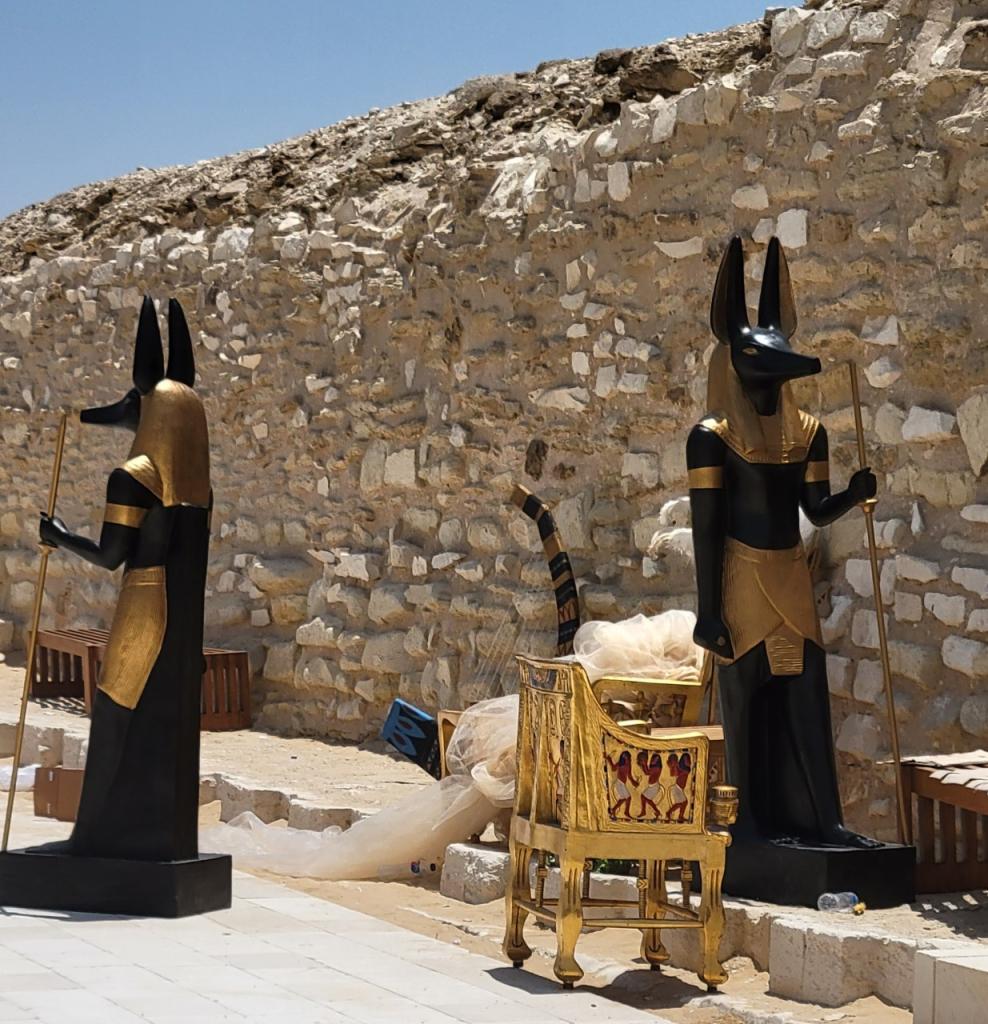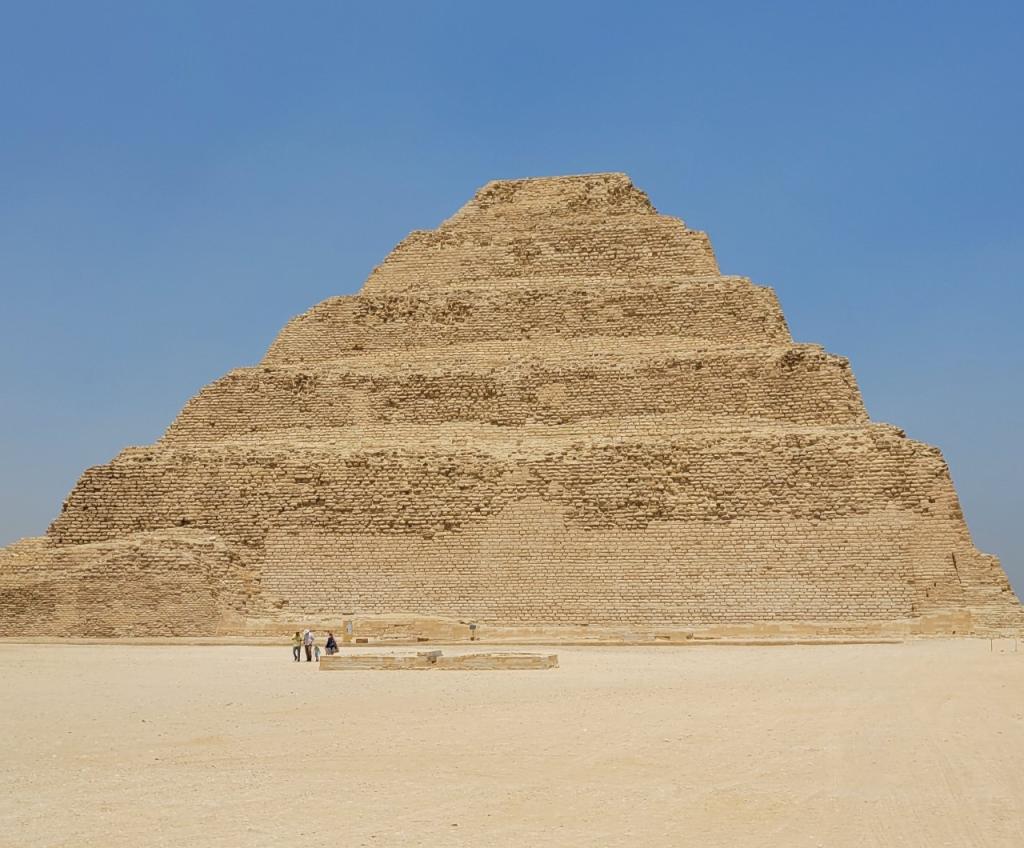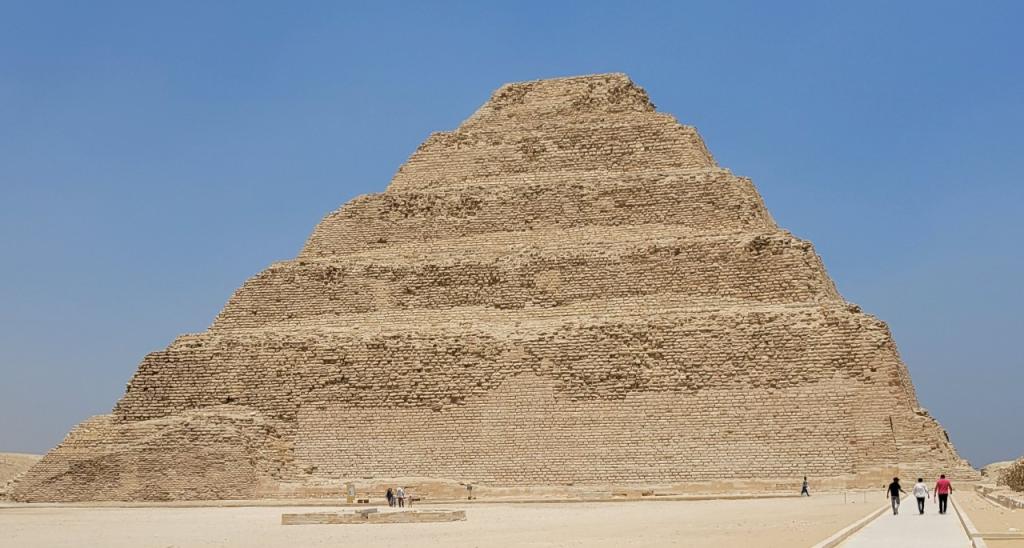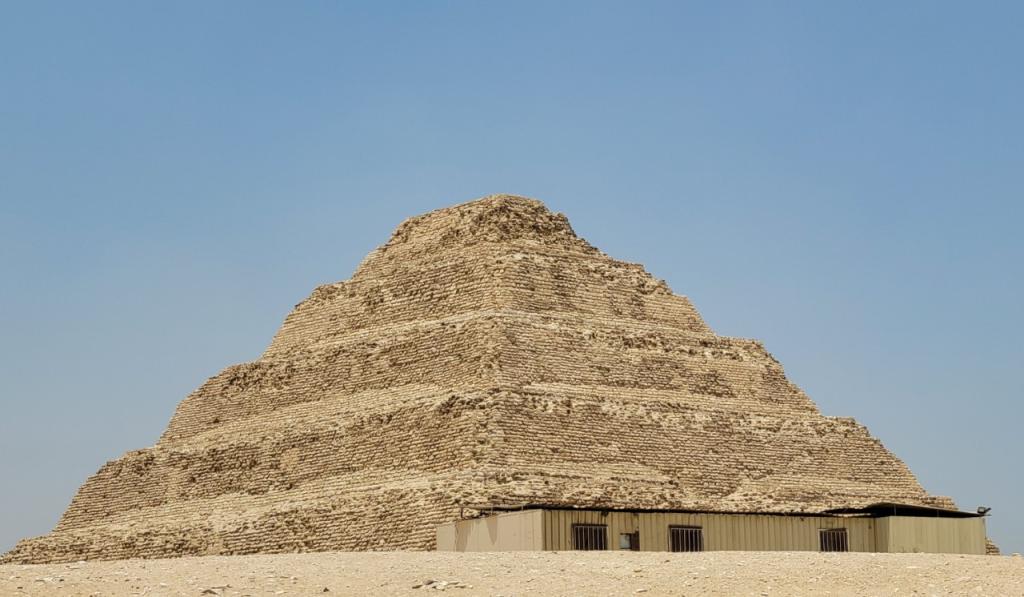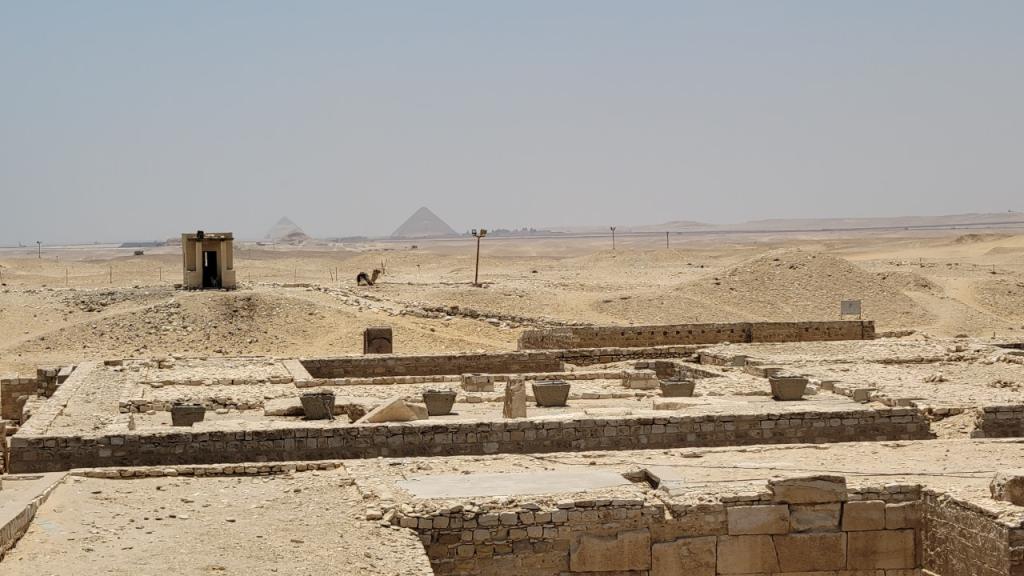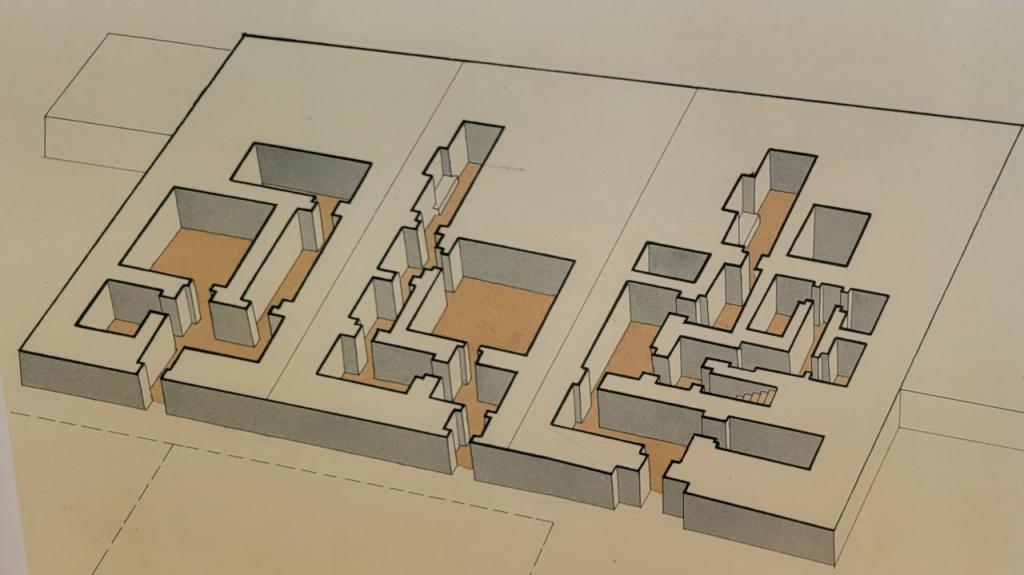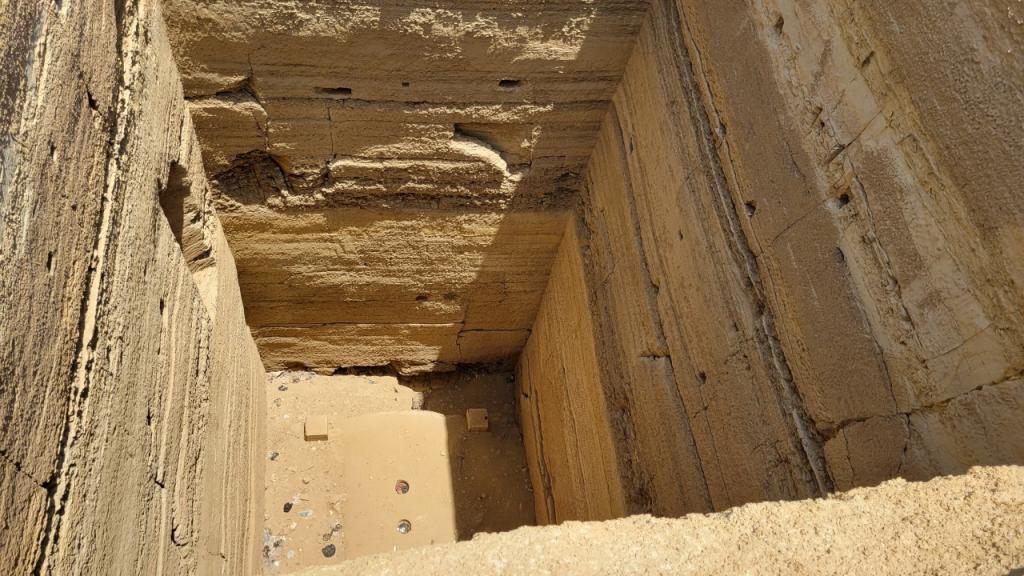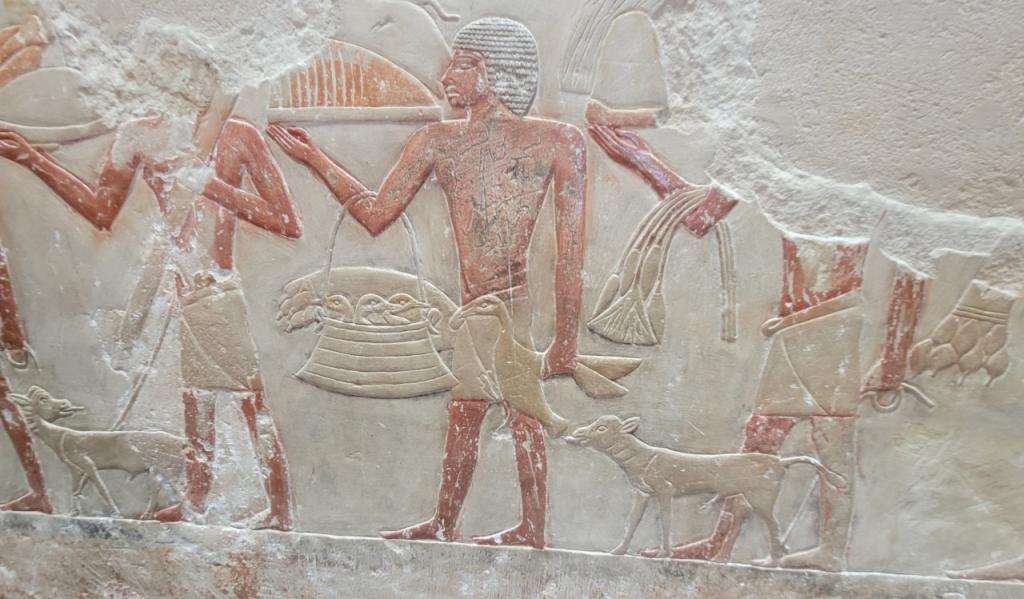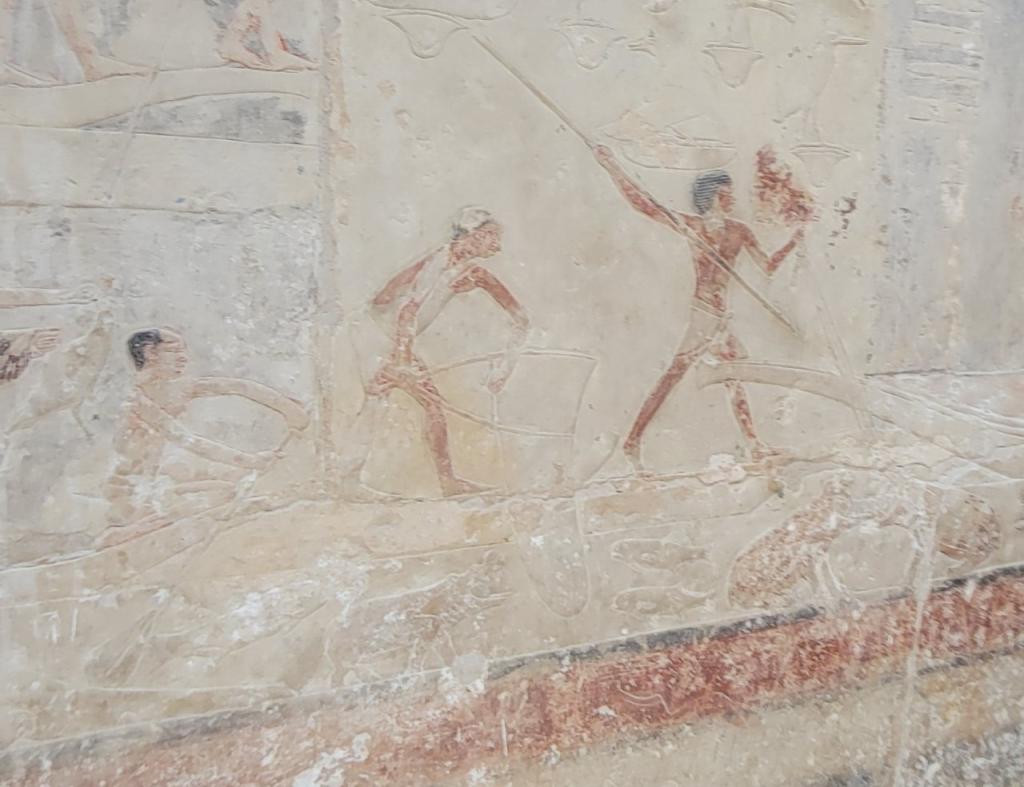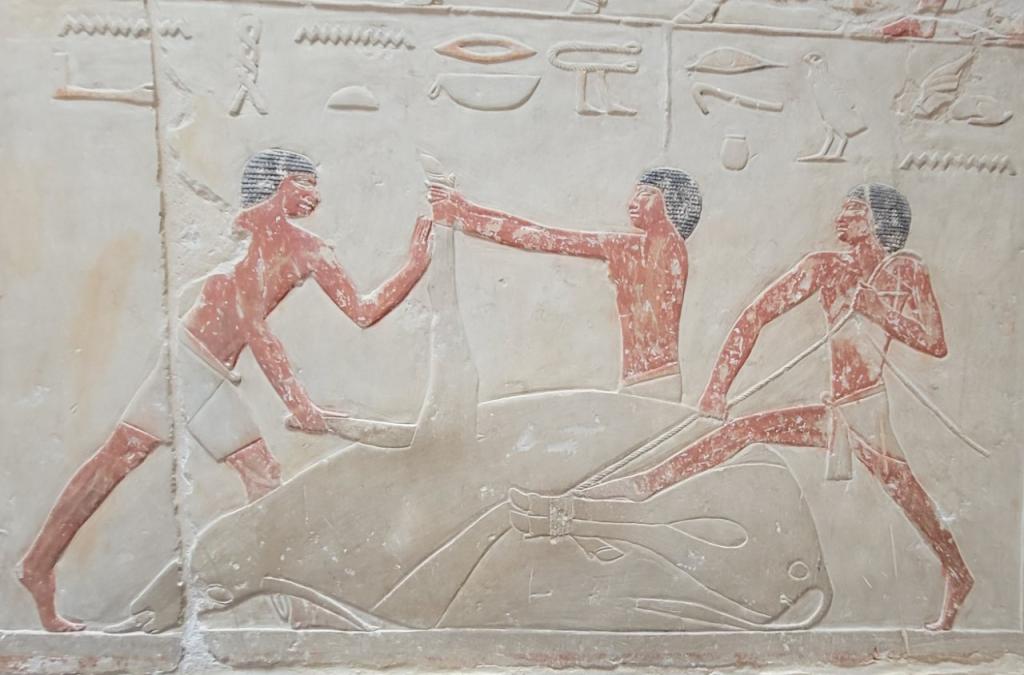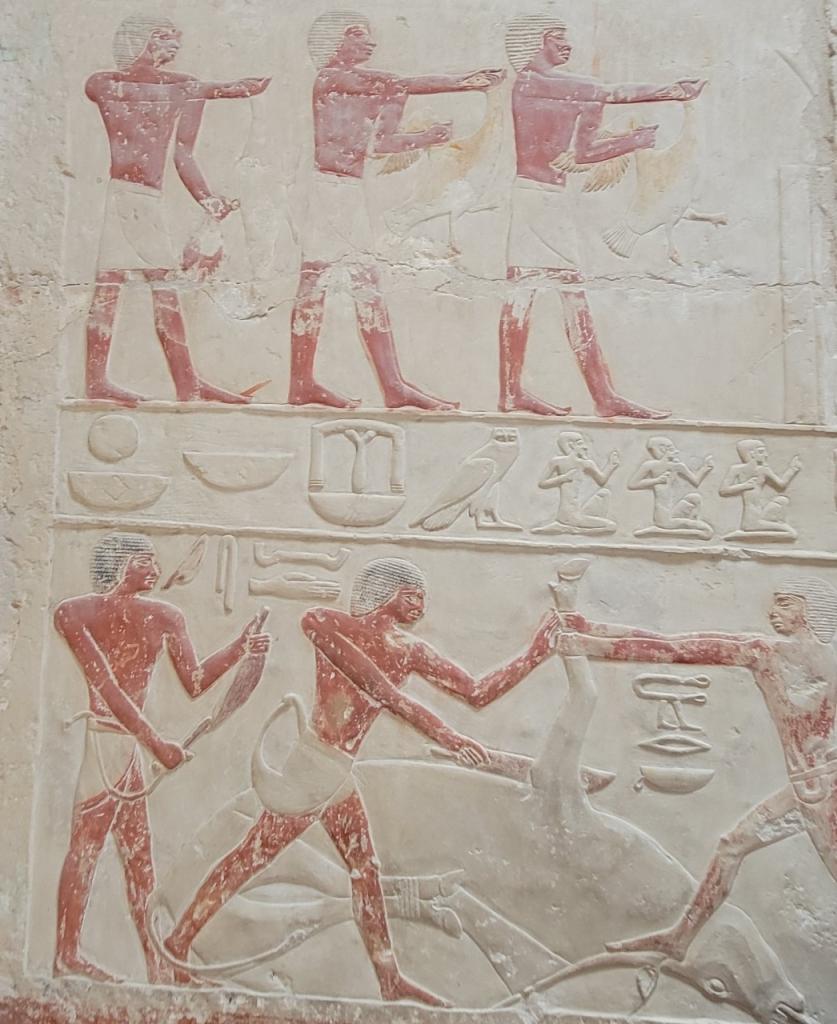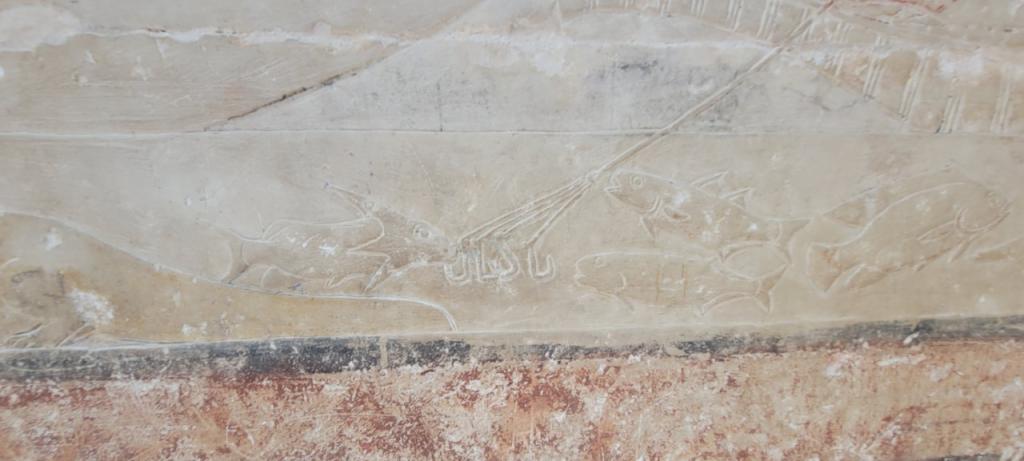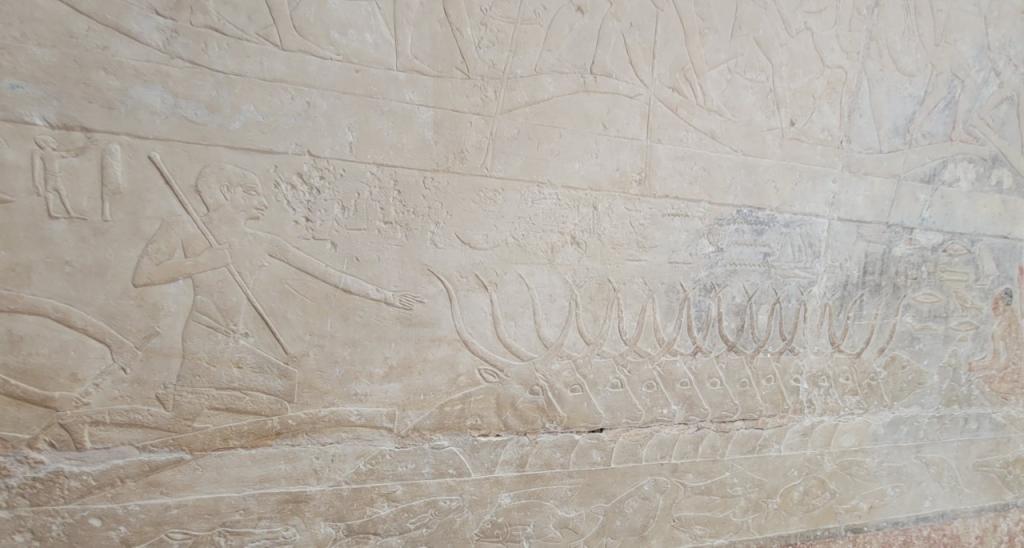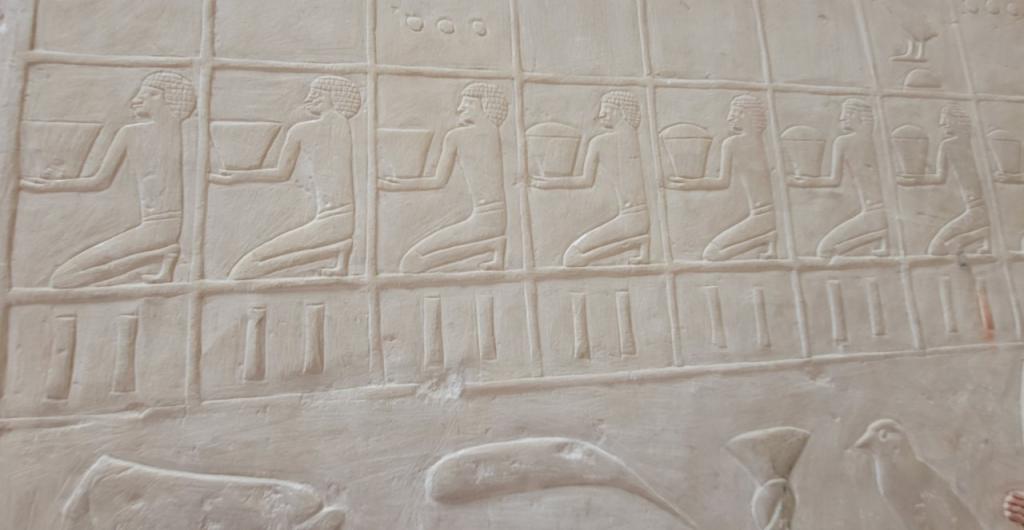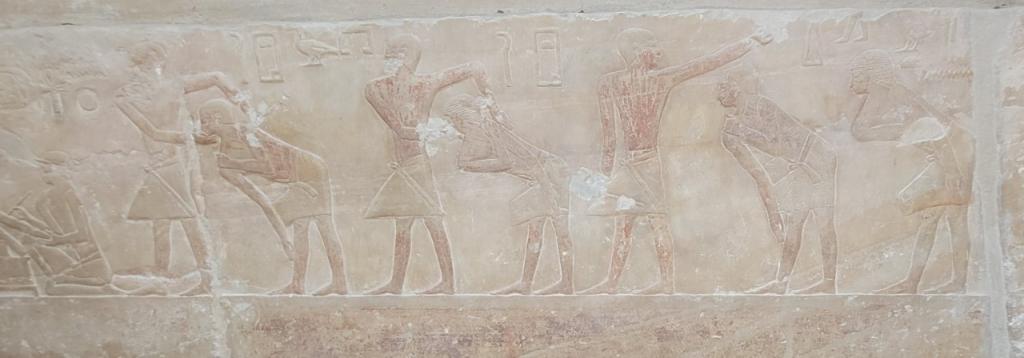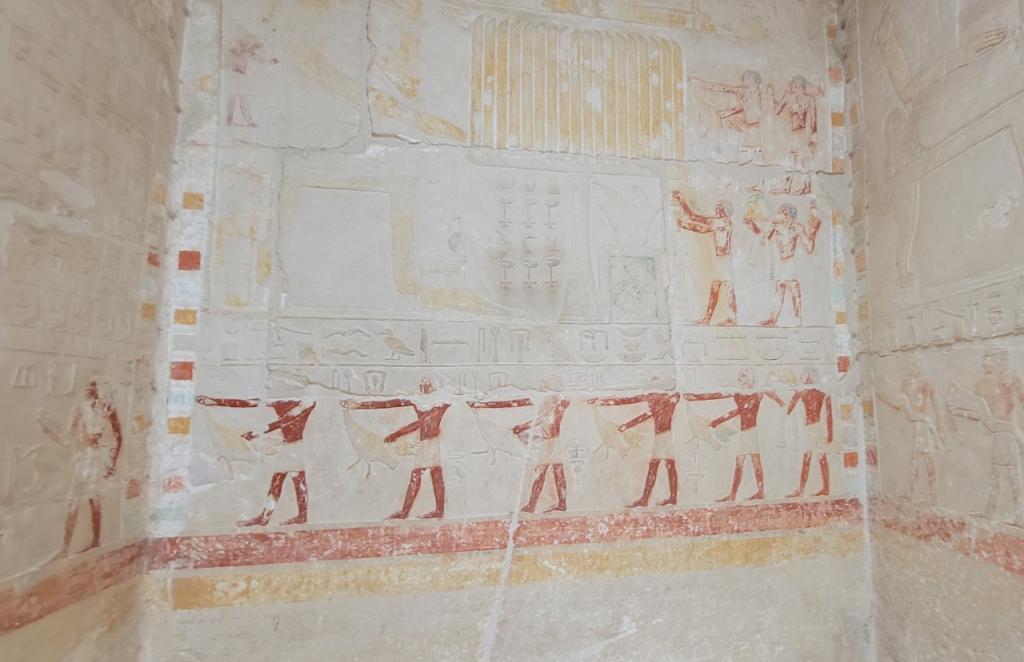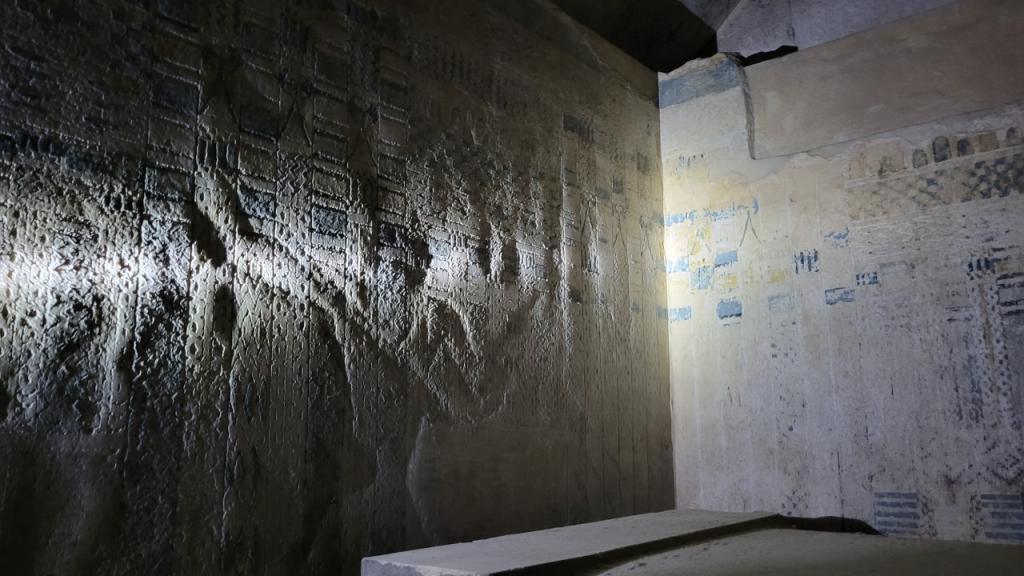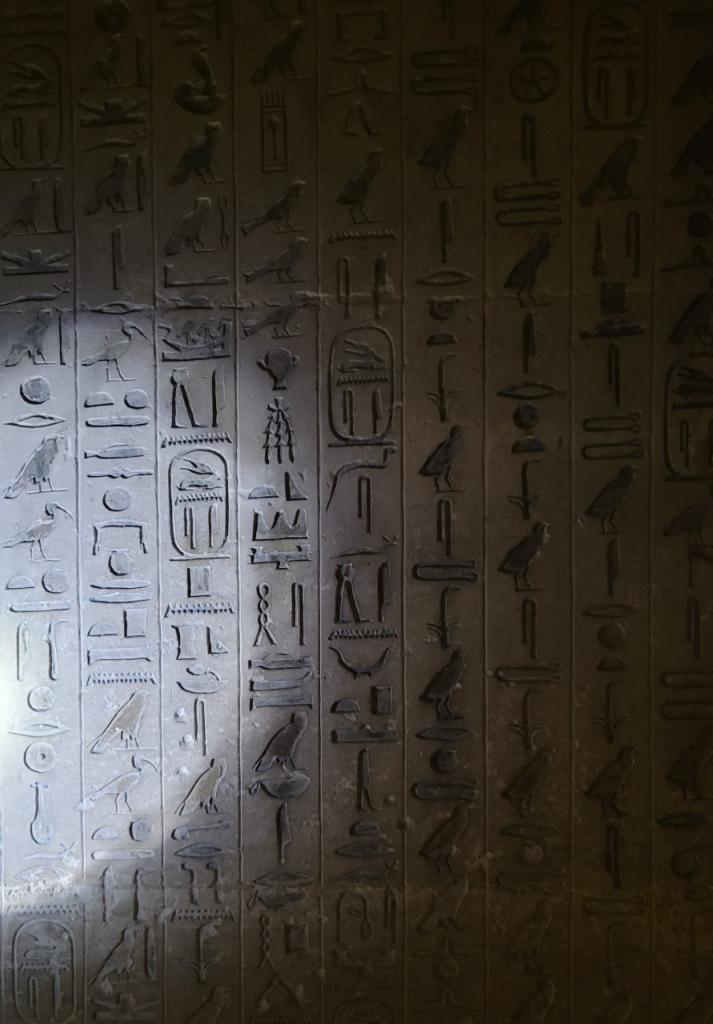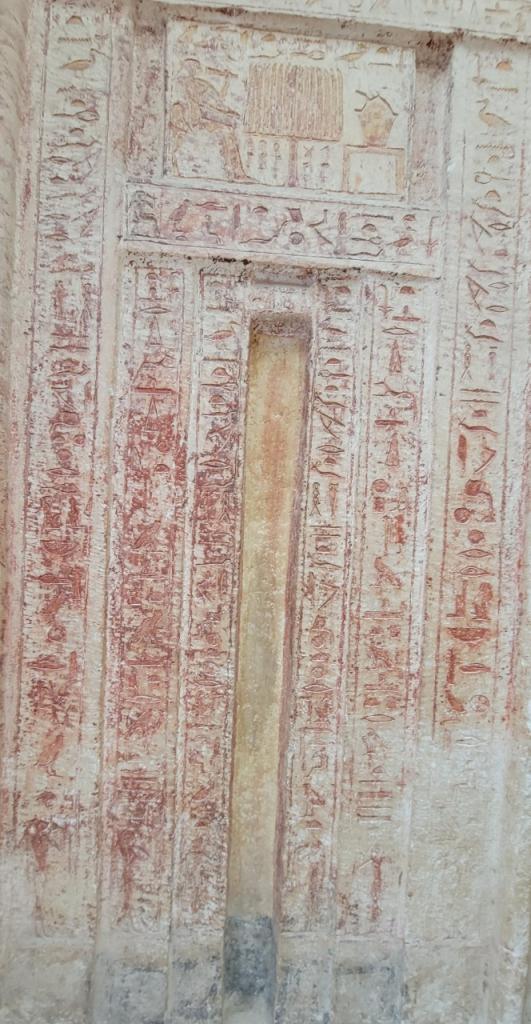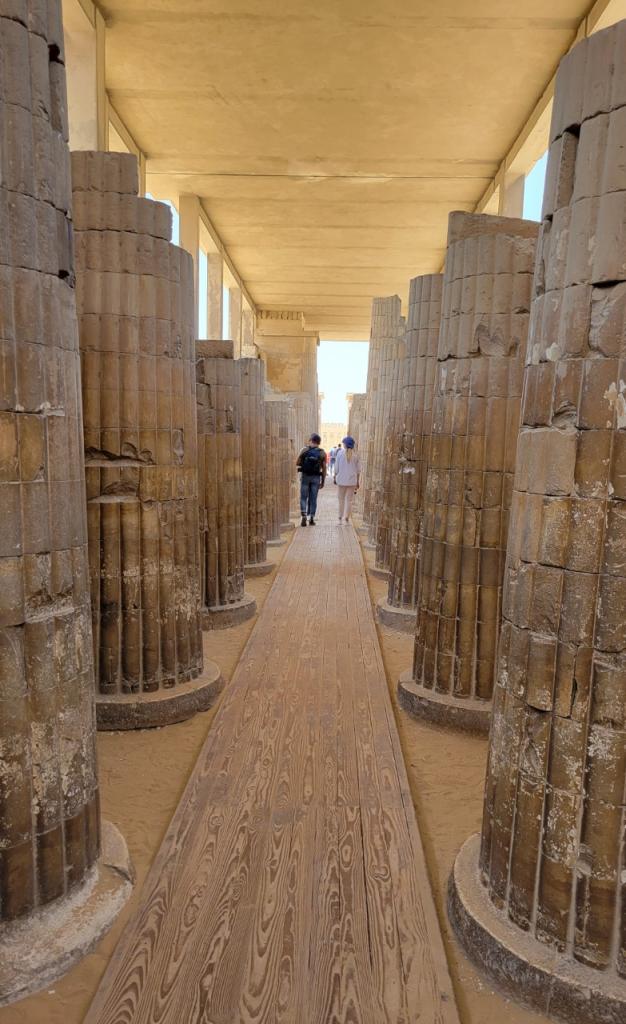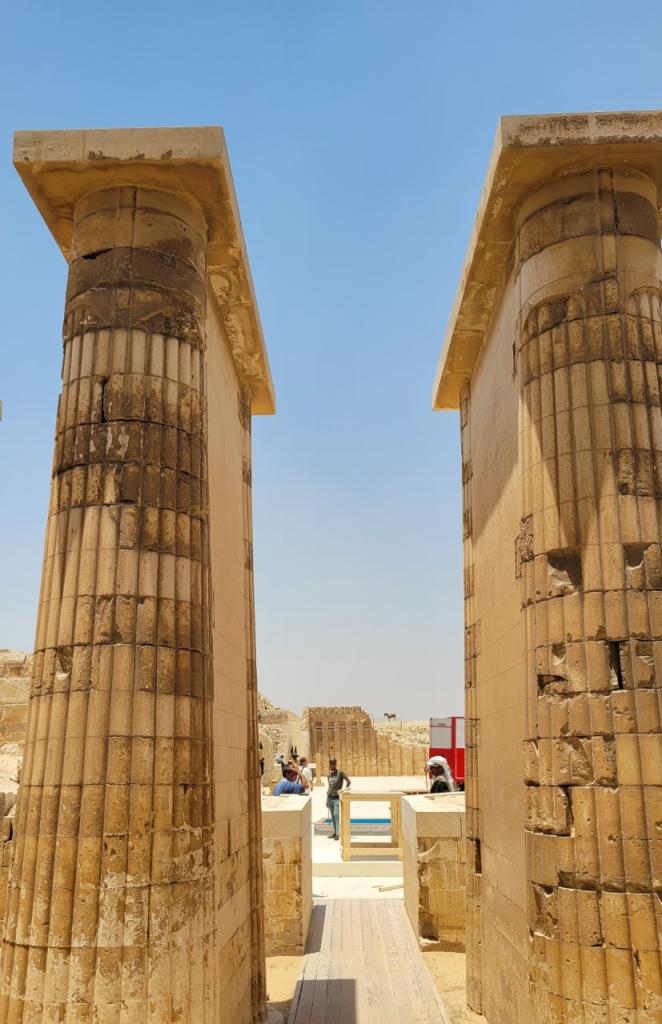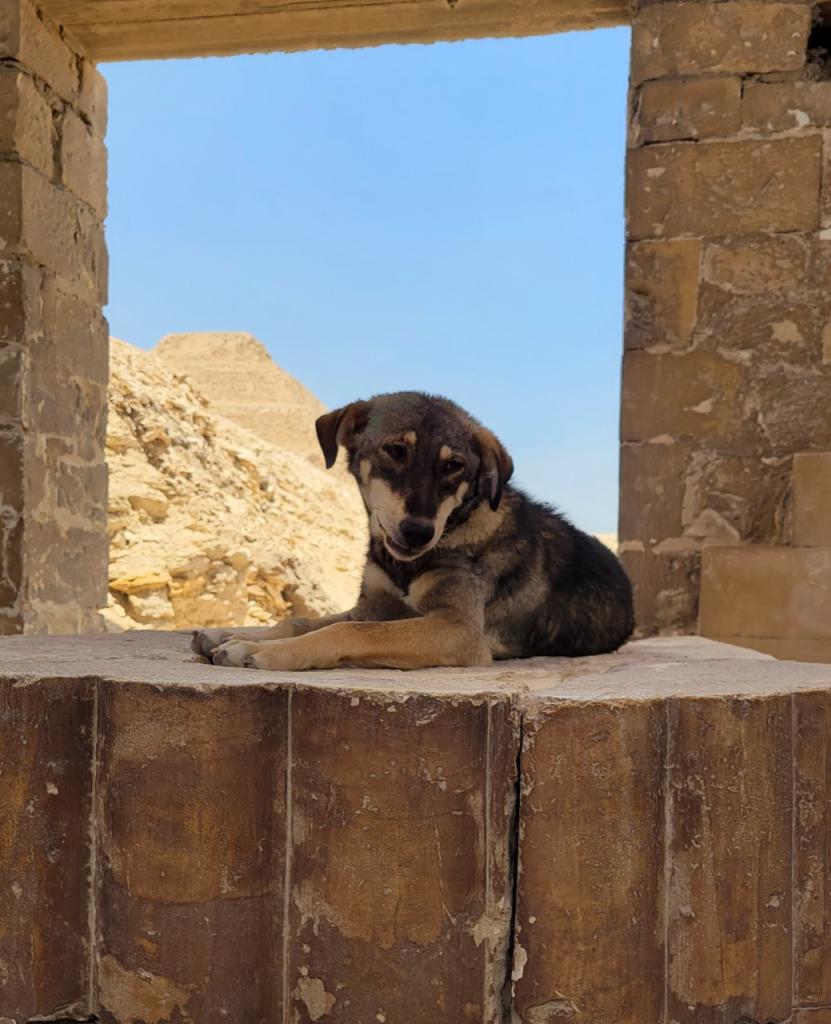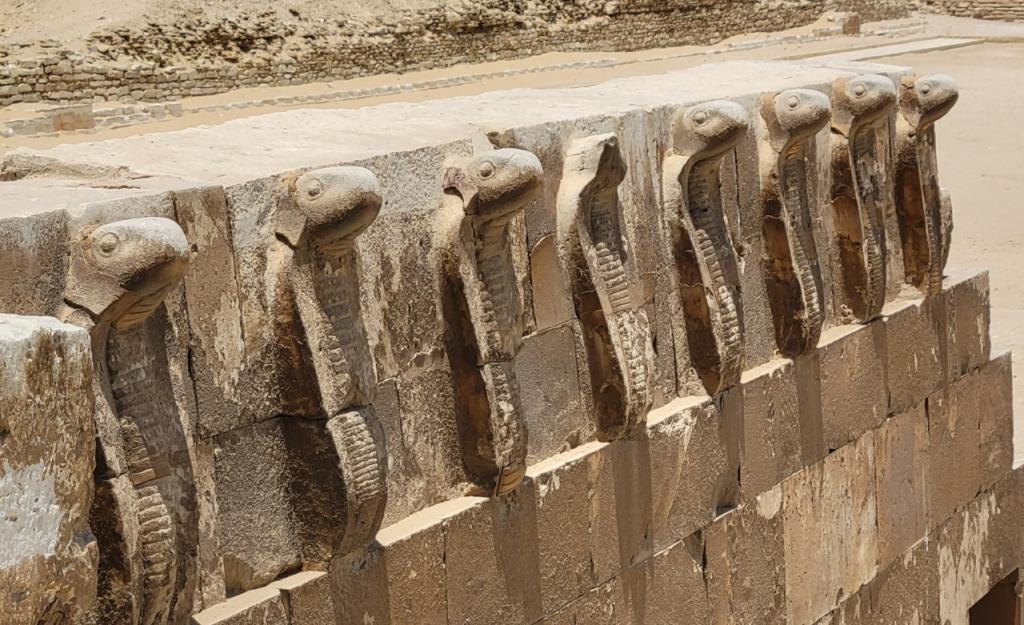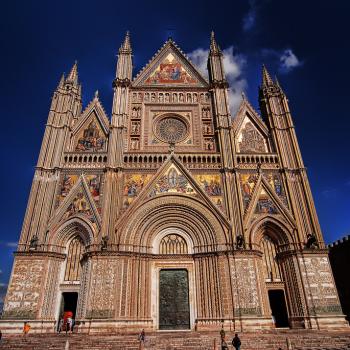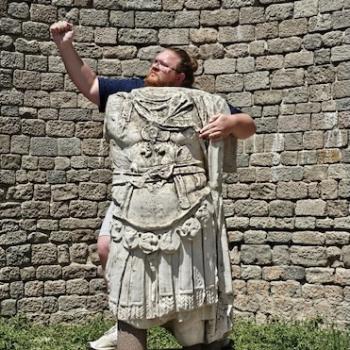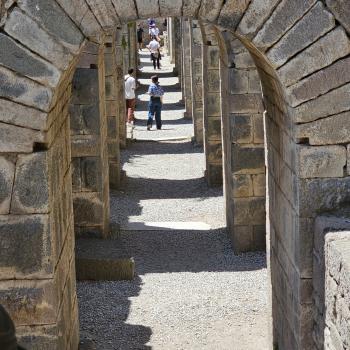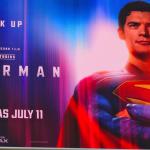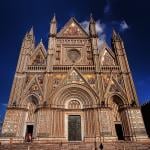When you go to Sakkara, you get to see the early attempts at pyramids, including the step down pyramid of Djoser (pronounced Zoser).
Yes there is a burial chamber in there. The debate of course is this based on the Babylonian step back temples of the early period. This tomb was likely built in 2600 B.C. or a bit earlier. This is much earlier than the ones you see in Giza. There has been lots of recent archaeological work done on this site, because in fact it is a huge necropolis…. something you’ll get a sense of from the following picture.
Here is some of the interesting archaeological report from recent excavations found on Wikipedia and accessed August 30th 2022.
In November 2020, archaeologists unearthed more than 100 delicately painted wooden coffins dating to the 26th Dynasty and 40 statues of the local goddess Ptah Soker. Other artifacts discovered include funeral masks, canopic jars and 1,000 ceramic amulets.[48][49] “This discovery is very important because it proves that Saqqara was the main burial of the 26th Dynasty,” said Zahi Hawass, an Egyptologist and Egypt’s former Minister of State for Antiquities Affairs.[50][51]
In January 2021, the tourism and antiquities ministry announced the discovery of more than 50 wooden sarcophagi in 52 burial shafts which date back to the New Kingdom period,[52][53] each around 30 to 40 feet deep,[52][53] and a 13 ft-long papyrus that contains texts from Chapter 17 of the Book of the Dead.[53] The papyrus scroll belonged to a man named Bu-Khaa-Af, whose name is written on it, on his sarcophagus, and on four ushabtis.[53][54] Excerpts from the Book of the Dead were also painted onto the surface of other coffins.[52] Also found in the shafts were wooden funerary masks, board games, a shrine dedicated to god of the dead Anubis, bird-shaped artifacts and a bronze axe.[52] A limestone stelae dated to the reign of Ramesses II was found in one of the shafts, depicting the overseer of the king’s military chariot Kha-Ptah and his wife Mwt-em-wia worshipping Osiris and sitting with six of their children.[53]
Also in January 2021, a team of archaeologists led by Zahi Hawass found the funerary temple of Naert or Narat and three warehouses made of bricks attached to the southeastern side for storage of temple provisions, offerings and tools.[55][56][57][52][58] Researchers also revealed that Narat’s name was engraved on a fallen obelisk near the main entrance. Previously unknown to researchers, Naert was a wife of Teti, the first king of the sixth dynasty.[59]
In November 2021, archeologists from Cairo University discovered several tombs, including that of Batah-M-Woya, chief treasurer during the reign of Ramesses II,[60] and of a military leader named Hor Mohib.[60]
In March 2022, five 4000-year-old tombs belonging to senior officials from the Old Kingdom and First Intermediary Period were discovered.[61][62] On 30 May 2022, 250 sarcophagi and 150 statuettes were displayed at Saqqara, dated back to the Late Period more than 2,500 years ago, in addition to a 9-meter-long papyrus scroll which could be a depiction of a chapter of the Book of the Dead.[63]
In May 2022, the discovery of the nearly 4,300-year-old tomb of an ancient Egyptian high-ranked person who handled royal, sealed documents of pharaoh was announced. According to University of Warsaw’s Polish Centre of Mediterranean Archaeology, the elaborately decorated tomb belonged to a man named Mehtjetju who served as a priest and an inspector of the royal property. Kamil O. Kuraszkiewicz, expedition director stated that Mehtjetju most likely lived at about the same time, at some point during the reigns of the first three rulers of the Sixth Dynasty: Teti, Userkare and Pepy I.[64][65]
There is also a temple complex here near the tomb of Djoser….
One way to deter grave robbers was to bury the dead deep in the earth. It was vaults like the report above says they found multiple sarcophagi and decorated wood coffins as well.
Good luck hauling heavy sarcophagi out of there in antiquity.
The temple complex has wall paintings of a much more primitive sort than we saw in the Valley of the Kings… the interesting thing is the ordinary life of slaves and scribes depicted bringing and recording all sorts of grain and animal sacrificial gifts to the gods….
Check out the fishing technique in these two shots…
Notice the scribes in the bottom left side of this panel…
This one is likely about slaves being presented for sale…
We went into one tomb that is being protected from outside light, which has bas relief images on the wall, and odd designs…
As well as the expected hieroglyphics..
We saw fake doors as well….
The outdoor shots show you the columns in the temple complex… like those at Luxor… and a smart dog staying out of the 105F desert heat!
Here are the sacred cobras also protecting the site…
And due to all the recent archaeological activity here of late, there are documentary crews around, complete with fake props…